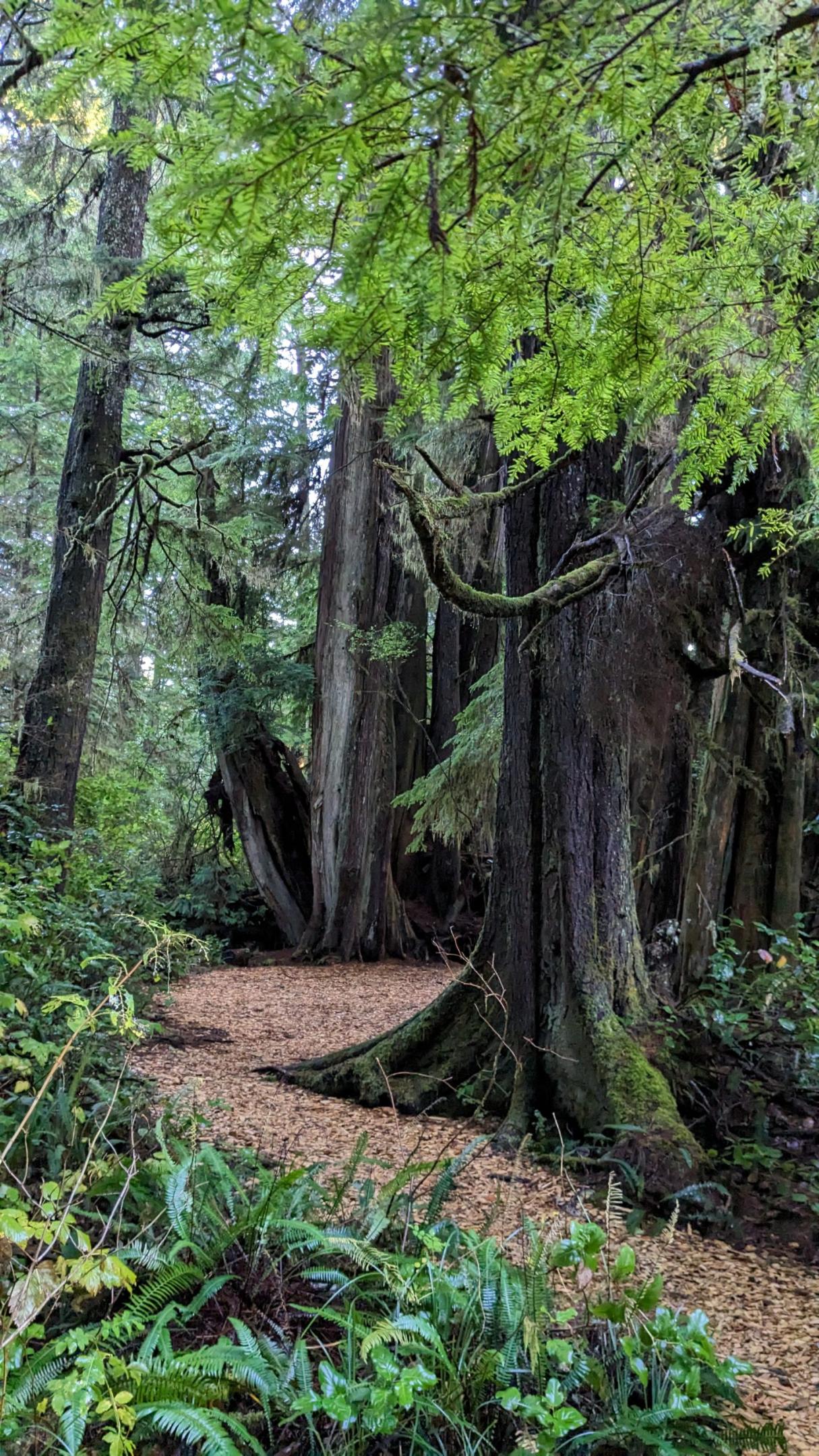
I still remember encountering my first nursery log on a trip to the Pacific Northwest over 20 years ago. I loved the concept and stop to study them whenever we visit lands of the giant trees as I like to call such habitats. I got to see several on a recent trip to one of our favorite places – Vancouver Island – where we visited many gentle giants. This being our fourth trip, they are like old friends I cannot wait to see. There is something grounding about standing under them or walking among them and imagining the hundreds of years of gradual changes and the countless lives that interact during these trees’ life cycles while alive and while decomposing. Log Life by Amy Hevron (Beach Lane Books, 2024) is a sweet picture book that does a commendable job of depicting the important role of nursery logs in habitats and giving the reader of sense of the long gradual changes that occur. Not an easy feat in 32 pages.
Hevron’s illustrations are whimsical – acrylic, marker, and pencil on Bristol board and digitally collated – with small creatures, and even fungi occasionally talking. There’s a lot that happens on a nursery log over hundreds of years and her illustrative style and simple text help make all this information manageable for readers. There is one spread of back matter at the end. A learn more section, selected sources, and additional reading. I especially liked the list of old-growth forests in the United States. There’s a few I didn’t know about east of the Mississippi, which are now on my must-see someday list.
Log Life is a gentle look at a complex array of changes that occur once a old-growth giant tree falls to the forest floor. It provides a nice background that is a great primer before any trip where you might encounter these gentle giants.






